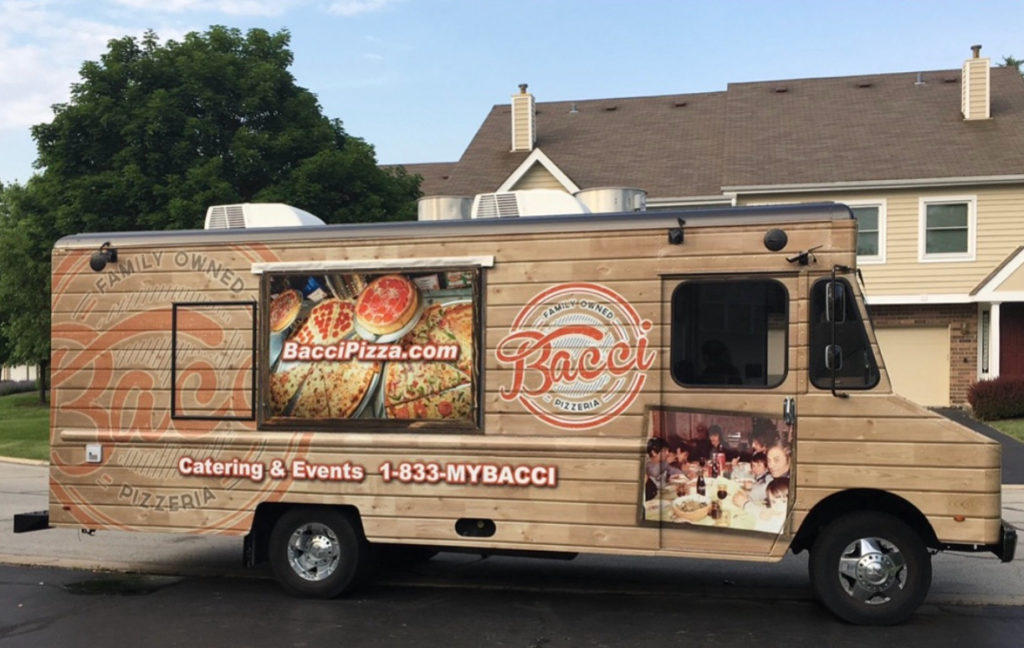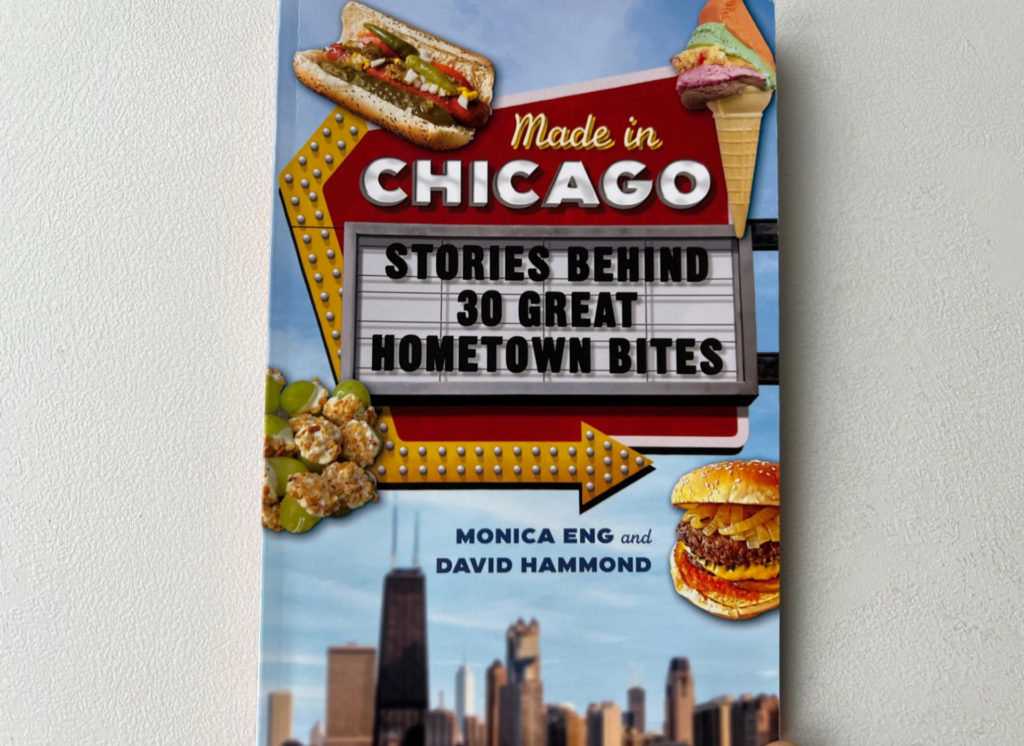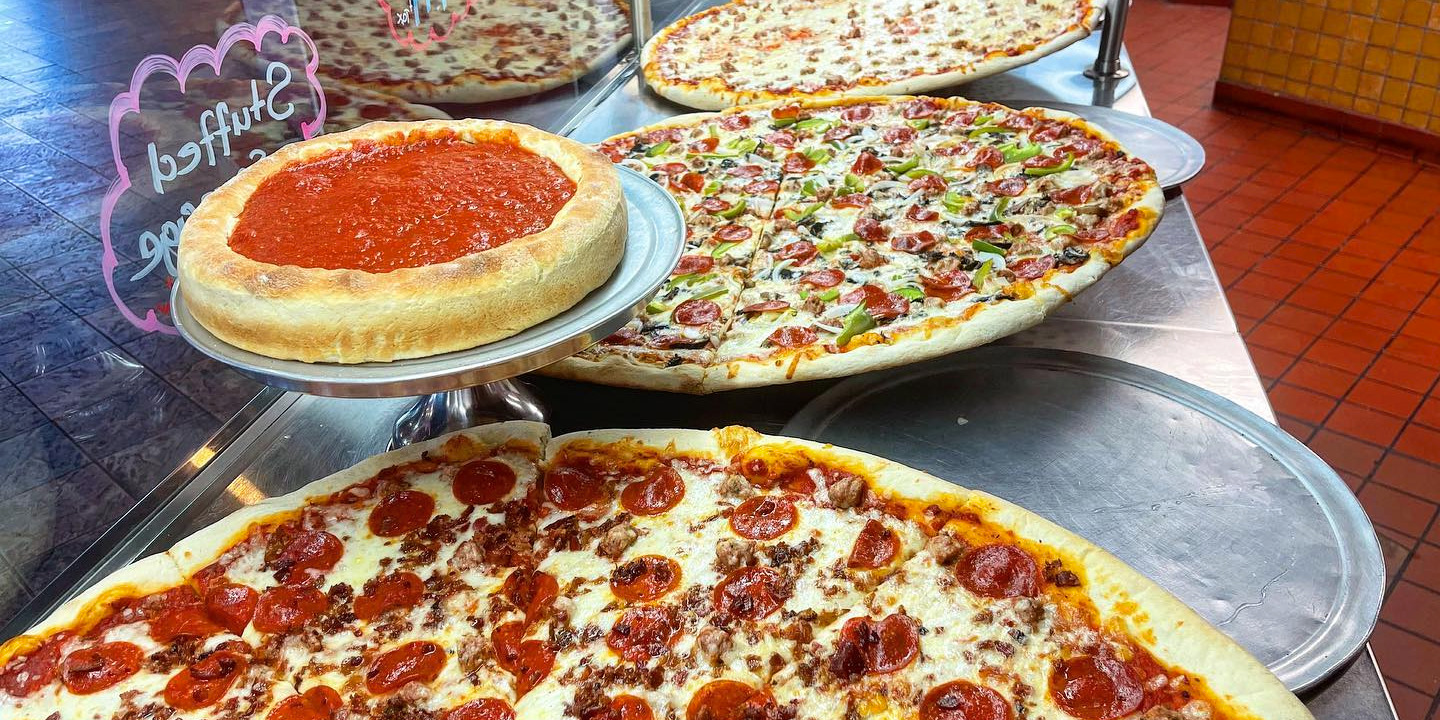It’s not everyday that a food truck from Chicago rolls into town or renown Chicago food writers visit Urbana, but this PYGMALION, it’ll happen.
Bacci Pizzeria at PYGMALION
For more than 25 years, Chicago’s Bacci Pizzeria has been famous for the original jumbo pizza slice. Owners Bobby and Lesa Bacci started the pizzeria in 1996, and the original Taylor Street location still operates today. Since opening the original pizzeria, it’s remained a family business, and all their kids are involved. The Bacci pizza biz has expanded to 11 pizzerias in the greater Chicago area and a three-truck fleet for private parties and events like Lollapalooza, North Coast, Riot Fest, Summer Smash, and INDY 5000. Bacci’s truck can handle large crowds well, and it’s a big deal that the truck will be here in Urbana. I for one can’t wait to smash the truck’s Chicago dog and a jumbo slice of ‘za to the beats of PYGMALION music this weekend.

Mr. Bacci himself will be on the pizza truck this weekend, which I think is so cool. I had a chance to talk with him before the event, and here’s what he told me over the phone in his glorious Chicago accent.
Smile Politely: What’s on the Bacci truck’s menu for PYGMALION?
Bacci: This menu will be Chicago-style. Original jumbo slice, obviously. We’ll have a traditional Chicago dog and Italian beef sandwich with sweet or hot peppers and thin-sliced Italian roast beef. Oh, and I’m doing pizza puffs, too.
SP: What toppings for the jumbo slices?
Bacci: I’ll have cheese, pepperoni, and tomato basil, which is vegetarian. I might even make a special for the weekend: Italian beef, cheese, and hot peppers. I’m saying I might.
SP: How has Bacci changed over time?
Bacci: Well, COVID. We do a lot more online and delivery instead of walking traffic. I see even the giants like McDonald’s being affected, taking pop out of the dining area. Food traffic is not what it used to be; there’s been a difference in dining in the stores.
SP: What’s stayed the same?
Bacci: At the of the day, people just want pizza. Pizza doesn’t change. And at Bacci’s, we’re using the same ingredients, the same sauce recipe — that’s never changed. What’s served at festivals and events is the same as what you get at the restaurant, always.
SP: When can we eat your food this PYGMALION weekend?
Bacci: I’m setting up Thursday night at 5 p.m., and I’ll be there Friday and Saturday, too, outside the Rose Bowl for all of PYGMALION.
PYGMALION reading: Made in Chicago: stories behind 30 great hometown bites
In addition to a Chicago food truck, two renowned Chicago food writers are coming to PYGMALION. At Analog wine bar, authors Monica Eng and David Hammond will read from their new book Made in Chicago: stories behind 30 great hometown bites at 6 p.m. on Saturday, September 23rd — and it is free to attend.
I devoured Made in Chicago cover-to-cover in two days because the stories are fascinating. The authors Monica Eng and David Hammond share the what, why, when, where, and how for thirty iconic foods in Chicago. The book dives into foods we might know pretty well: Chicago popcorn mix, the Chicago dog, deep-dish pizza, Malört, and tavern-style pizza, but there are some I’d never heard of but definitely want to eat: Akutagawa, flaming saganaki, Jim Shoe, and gam pong chicken wings. It’s a bucket list of sorts, the kind of Chicago food greatness worth a taste, and it’s so interesting to learn the origin stories. Just to tease some facts from the book: Chicago’s North Side was once a huge celery hub, and I learned what an Italian soaker is: an Italian beef sandwich without the beef, just the bread used for the sandwich drenched in jus.

Ahead of the authors’ PYGMALION reading at Analog, I talked with the Chicago foodies to learn more about the book.
Smile Politely: What inspired you to write this book?
Monica Eng: I had been writing about the origins of various Chicago foods for years as part of my job at the Tribune and WBEZ, and I was having lunch with a food historian friend one day who encouraged me to collect some of these stories in a book. He mentioned that U of I press was starting an imprint that specifically looked at Illinois foodways and this might be perfect for it. I initially didn’t think I had the time for it. But then I ran into David at a party and mentioned the idea to him and asked if he’d like to collaborate.
Once we had a proposal and a contract the inspiration came from trying to meet our deadline, which I’m told authors routinely blow. But having a global pandemic that locked us in our houses without much else to do helped me pull my half of the manuscript together. In the process of writing it, though, I realized that the real inspiration was to try to tell the stories — or sometimes to correct the stories — of people who immigrated to Chicago and created delicious things that changed the local culture forever. A second sad inspiration was to relate how culturally divided Chicago remains today with few North Siders understanding the food of the South Side and vice versa.
David Hammond: I’ve been living in Chicago most of my life, and many of the foods we cover in the book, well, I’ve been eating for many years but had no idea of their history. I wanted to learn that history. Another strong motivator was my interest in shining a light on smaller, lesser known Chicago food producers. Chicago is now known as a culinary capitol, and it’s the James Beard awarded chefs, Michelin starred restaurants who get all the attention. Our book focuses on folks who may never have heard of James Beard or Michelin and just turn out delicious and interesting food for their community, day after day.
SP: What are the hallmarks of a good mom-and-pop restaurant?
Eng: Honest food made with love in a comfortable setting.
Hammond: A legit mom-n-pop will not be part of a chain, may have just a chalkboard menu but never a preprinted menu encased in plastic, and will usually be staffed by family members.
SP: Can you talk about the influence of immigrants on the Chicago food scene?
Hammond: So many of the Chicago original foods we cover in this book were the result of immigrants from other countries: jibaritos, Italian beef/giardiniera, Chicago hot dog, Akutagawa, flaming saganaki, Chicago corn roll tamale, Malört, gam pong chicken wings, and others. As with other industries, the food industry in Chicago has been powerfully influenced by immigrants who inject not only new energy but new ideas into the mix.
Eng: With very few exceptions, first generation immigrants (from abroad and the South) developed all of the signature foods we write about in the book. It comes from an entrepreneurial spirit but also an ability to bring in outside ideas and affordably adapt them to the ingredients they find here. This book would not exist without the innovations of first generation immigrants.
SP: David, in an interview, you said, “It’s hard for me to imagine Chicago food without Italian beef.” Can you talk about what you love most?
Hammond: The Italian beef sandwich represents immigrant ingenuity: it was developed by Italian immigrants in Chicago’s Little Italy neighborhood. At the turn of the last century, Italian Americans held “peanut weddings,” which were wedding celebrations that were nowhere near as costly as they are today. People didn’t have a lot of money to spend on the wedding receptions, so someone came up with the idea of cutting meat very thinly, putting it on bread, and then soaking the bread in thin, spicy gravy. That was one way to serve more people for less money. It turned out to be one of Chicago’s most beloved foods.
Italian beef is a delicious sandwich. Luscious with juicy meat and perked up with spicy giardiniera (also a Chicago original food), it is right at the top of Chicago food inventions. Other cities have hot dogs, and other cities have pizza, but the Italian beef sandwich is pretty much exclusive to Chicago, and it represents how Italians – and by extension all immigrant communities – took what they had (and many times that wasn’t very much) and made something beautiful with it.
SP: Can you talk about what makes the Chicago dog so great?
Hammond: The Chicago dog looks so beautiful, with the fresh red tomatoes and white onions, yellow sport peppers and mustard, green pickle spear and blue-green relish, and the bursting-with-juice sausage. Those ingredients make you want to eat it, and you’ll be glad you did: the slightly sour and sweet flavors balance each other out, the onions and sport peppers add crisp and spicy snap. The sausage itself adds juiciness that helps the Chicago hot dog avoid dryness, the great enemy of all sandwiches.
Eng: The perfect balance of sweet, spicy, sour, sharp, juicy, rich, soft, crisp, hot and cold all together on one bun.
SP: What part of the book will you reading for PYGMALION?
Hammond: Opening sections of the Italian beef chapter (of course!), as well as the Malört and Maxwell St. Polish Sausage chapters.
SP: What do you hope readers take away from the book?
Hammond: I hope readers appreciate that there’s a lot of good (or sometimes just very interesting) food out there, maybe in neighborhoods they never visited before, and using our book they can learn about these foods and then enjoy them by getting in their car and exploring parts of Chicago they’ve never seen before to enjoy foods they’ve never eaten before. The book is kind of a call to adventure.
Eng: I hope these stories can highlight the contributions of sometimes little known immigrants to Chicago and how they shape what we eat every day. I hope it also encourages people to try — even a bite — of the food people enjoy across town as a way to break down some of the cultural segregation that still pervades too much of our society.








